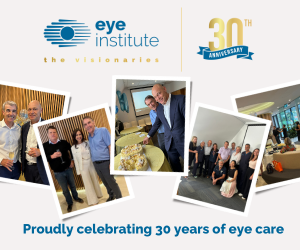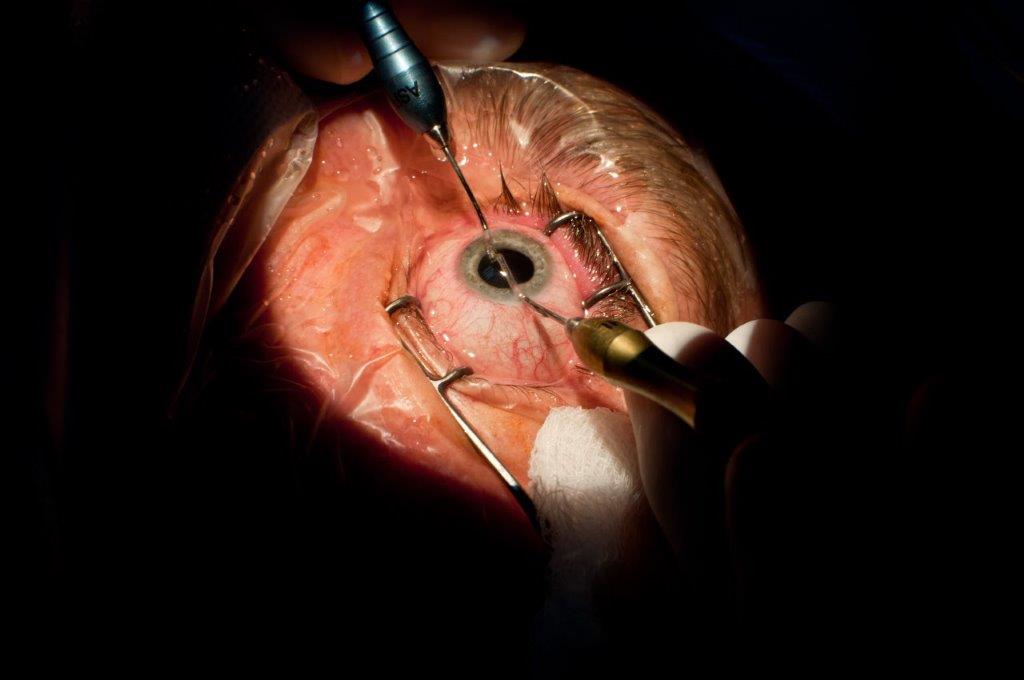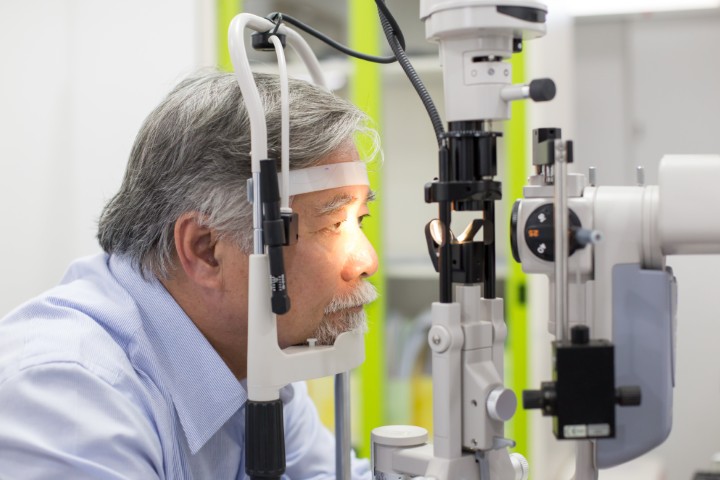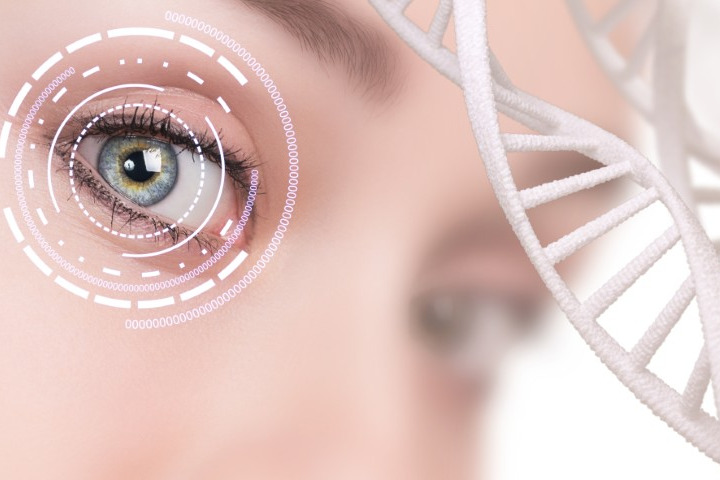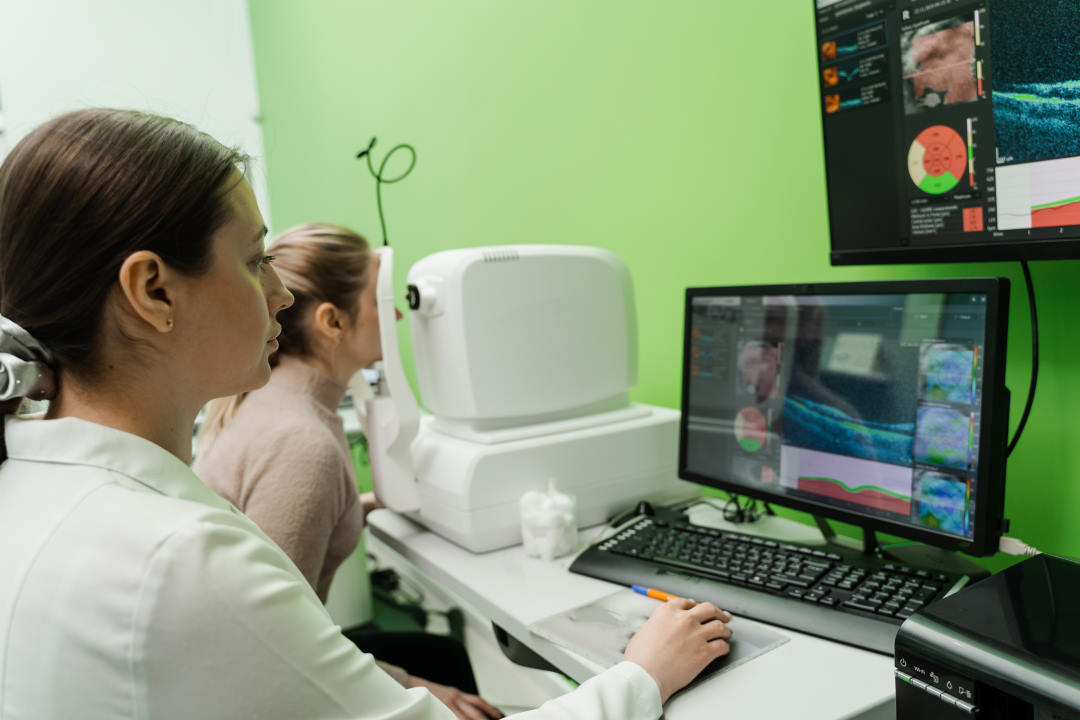Albinism 101
The term albinism is derived from the Latin word albus for white. Although the first scientific report of albinism was by Sir Archibald Garrod in 1908, albinism has been reported in Africa for over 2000 years. Attitudes towards individuals with albinism have changed over time. Ignorance, superstition and even, in some cases, infanticide and God-like reverence have generally given way to understanding and acceptance. Education on albinism is needed worldwide to reduce discrimination, stigma and sometimes physical danger associated with the condition due to misperceptions. Vision support is an essential part of maximising potential and care for individuals affected by this condition.
Albinism describes a heterogeneous group of genetic abnormalities which result in abnormal melanin synthesis and transportation. Phenotypically, albinism presents with a lack of pigmentation. Albinism can be categorised into two main groups, oculocutaneous albinism and ocular albinism, based on involvement of the hair, skin and eyes compared to the eyes alone, respectively. The prevalence of all types of albinism varies worldwide but in general is approximately 1/17,000, with the prevalence increasing in some areas of Africa to 1/1,000.
Types of albinism
The most visible type of albinism is oculocutaneous albinism (OCA) which makes up 90% of albinism cases. Males and females are equally affected due to the autosomal recessive inheritance pattern of OCA. The eyes, skin and hair all have reduced pigmentation (see Fig. 1). However, individuals affected do not necessarily have a complete absence of pigment. The extent of reduced pigmentation in affected individuals is dependent on the subgroup of OCA present, with OCA sub-divided by genotype.
OCA Type 1 (OCA1), also known as tyrosinase-negative OCA, is the most severe form of albinism. Tyrosinase is a key protein of melanin production, so an absence of tyrosinase results in no melanin production. OCA1 is categorised by extremely fair skin, white-blonde hair, and marked iris transillumination. Iris colour is non-existent or, when present, is a light grey though eyes often appear red due to retinal reflection.
Tyrosinase-positive OCA, more accurately known as OCA Type 2 (OCA2), results in a milder version of albinism as some pigment is present. This differentiation can be made clinically with pigment able to be observed in OCA2 in the hair, eye, and skin.
There are many further categorisations of OCA including OCA3 and OCA4. These are both milder variations of OCA which have an abnormal tyrosinase-related protein and a membrane-associated transporter protein, respectively. Both of these types have some pigment present and can accumulate more pigment over time in the hair, skin and eyes.
The remaining 10% of albinism is a condition known as ocular albinism. In this rare condition only ocular structures are affected with no loss of pigment in the skin or hair of affected individuals. The irises in individuals with ocular albinism can appear anywhere from light blue to brown. Ocular albinism is further categorised into two main types. Type 1 is caused by a defect in the GPR143 gene and is inherited in a recessive X-linked pattern. It affects approximately 1/50,000 males. Female carriers of the gene mutation having a spattered appearance to their fundi with no functional impact on vision. In light-skinned young males some difficulty in the differentiating between OCA and ocular albinism Type 1 can occur. All types of albinism have similar ocular findings except for ocular albinism Type 2, also known as Aland Island eye disease, which has the same ocular impacts as ocular albinism Type 1 but also presents as a protanopia colour vision defect and with defective dark adaptation.
Primarily albinism occurs in isolation although there are a few associated syndromes, including Hermansky-Pudlak, Chediak-Higashi, Griscelli and Waardenburg syndromes. Although these are all extremely rare, the possibility should be investigated if an individual presents with albinism and other systemic symptoms.
Diagnosis of albinism is often made on clinical findings alone. This is more readily done in OCA than ocular albinism where there are more readily-observable signs of the condition.
Ocular findings in albinism
A complete lack of or insufficient amount of melanin pigment results in the abnormal development of some ocular structures. Common ocular findings of albinism include reduced visual acuity, nystagmus, iris transillumination (see Fig. 2), foveal hypoplasia and increased crossing of optic nerve fibres at the chiasm.

Fig 2. Trans-illumination of both irises in a child with oculocutaneous albinism
Visual acuity in individuals with albinism ranges for 6/12 to 6/120. The reduction in vision is primarily caused by an absence of the foveal pit (foveal hypoplasia). During development the fovea does not fully form due to pigmentation in the retinal pigment epithelium being a central component of this process. An optical coherence tomography scan will reveal a thickened macular area and a small or non-existent foveal avascular zone.
Nystagmus is present in individuals with albinism as a result of their reduced vision since birth. It is a rhythmic, involuntary, conjugate eye movement which is normally pendular in form. Those affected may adopt an abnormal head posture to maximise their null point of gaze, the direction of gaze with the least eye movement. Convergence of the eyes can also reduce nystagmus which can be beneficial for near work.
Vision is further impaired by photophobia and glare as a result of iris transillumination and retinal light scatter. These are caused by a lack of pigment in the uveal layer of the eye. The iris transillumination may be seen as very small spoke-like areas or may indicate a complete lack of iris pigment. This is best viewed in a very dark room with a small bright slit lamp beam aimed through the pupil causing retroillumination of the lens and iris.
An unusual finding in albinism is increased optic nerve fibre decussation with up to 90% rather than the normal 50% of fibres crossing to the contralateral side at the chiasm. This results in a lack of stereopsis. This sign on visually evoked potentials can be used as a diagnostic tool in young children when the diagnosis is unclear.
In addition to the other ocular findings, refractive errors are more common in individuals with albinism. In particular, high with-the-rule astigmatism is often seen and correction of this is variably accepted and worn. Correction of refractive error is important in young children with albinism to prevent amblyopia formation.
Ocular and visual management pearls
- Spectacles for refractive errors may or may not improve vision. Some individuals report increased ‘comfort’ in vision even if improvement on a visual acuity chart is hard to assess.
- Tinted or transitioning spectacles, or sunglass wear is important for everyone with albinism due to the large amount of light entering the eye.
- A brimmed cap can block a lot of sunlight and glare if they prefer this to wearing spectacles/sunglasses.
- Surgical intervention for consistently abnormal head postures can be beneficial to move the nystagmus null point into the primary position of gaze.
- Enlargement of text and magnification are often very successfully used to help with visual access. Visual fatigue can have a significant impact on concentration if appropriately sized print or magnification is not used.
- Individuals with albinism in New Zealand can access support from services such as the Blind Low Vision Education Network New Zealand (BLENNZ, 0-21 years old), The Blind Foundation or the national Albinism Trust.
References
Gronskov, K., Ek, J., Brondum-Nielsen, K. Oculocutaneous albinism. Orphanet Journal of Rare Diseases. 2007;43(2)doi:10.1186/1750-1172-2-43.
Jauregui, R., Huryn, L.A., Brooks, B.P. Comprehensive Review of the Genetics of Albinism. Journal of Visual Impairment and Blindness. 2018:683-700.
Kirkwood, B. Albinism and its Implications with Vision. The Journal of the American Society of Ophthalmic Registered Nurses. 2009;34(2):13-16.
Reimer-Kirkham, S., Astle, B., Ero, I., Panchuk, K., Dixon, D. Albinism, spiritual and cultural practices, and implications for health, healthcare, and human rights: a scoping review. Disability & Society. 2019. doi:10.1080/09687599.2019.1566051
Seo, J.H., Yu, S.Y., Kim, J.H., Choung, H.K., Heo, J.W., Kim, S. Correlation of Visual Acuity with Foveal Hypoplasia Grading by Optical Coherence Tomography in Albinism. Ophthalmology. 2007;114(8):1547-51.
Dr Samantha Simkin is a therapeutically-qualified optometrist who completed her PhD in the Department of Ophthalmology at the University of Auckland on paediatric visual impairment, where she is now a postdoctoral research fellow.





